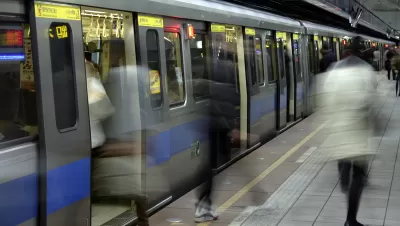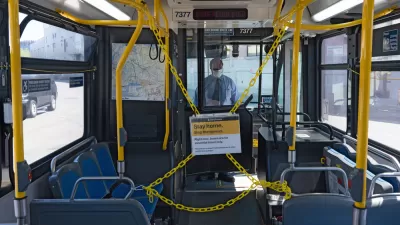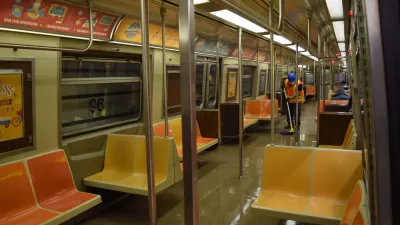The effects of a global pandemic on American shores are beginning to emerge for public transit systems. The consequences of a drop in transit ridership could extend beyond the end of the pandemic.

On March 9, Toronto Public Health officials released an announcement assuring residents that was safe to use public transit amidst the coronavirus scare, reports Ben Spurr. The announcement responded to a far less assuring announcement, made the day before by Governor Andre Cuomo and Mayor Bill De Blasio, suggesting residents of New York City should avoid public transit to help prevent the spread of the coronavirus.
COVID-19 hit close to home for the New York Port Authority—Rick Cotton, the executive director of the Port Authority of New York and New Jersey, is one of the confirmed cases in the pandemic.
Last week, expectations about how coronavirus would impact public transit relied on experience from Asian countries, but following the announcement about Cotton and the statements of New York's political leadership, U.S. transit systems began to feel the effects. Transit ridership dropped by 170,000 passengers—8 percent—on BART between the last week of February and the first week of March, according to an article by Rachel Swan. [Update: Reports now reveal ridership on the New York MTA system dropped 18.5% on Wednesday, March 11 relative to the comparable day in 2019—a total of 996,000 riders.]
As pointed out in an article by Aaron Gordon, decreased transit ridership could have a long-term impact of transit funding, and not just because of a reduced amount of fares being paid by riders as they work from home and avoid public gatherings that tend to drive transit ridership (as driving is additionally incentivized by plummeting oil prices).
On average, 56 percent of a transit agency’s budget comes from state or local subsidies, according to that same Department of Transportation report—the rest comes from the federal government or is directly generated by the agency through advertising or other initiatives—and a big part of convincing politicians those subsidies are worthwhile is by demonstrating people use the system with, you guessed it, ridership figures.
So, if ridership plummets, that argument becomes harder, especially if government budgets become stressed bailing out all the other at-risk businesses and populations that need more money. When it comes to governments at all levels, transit has a long history of taking the back seat during crunch time. And if people abandon it in droves due to coronavirus, history may repeat itself once again.
FULL STORY: Coronavirus May Have a Lasting Impact on Public Transit Funding

Trump Administration Could Effectively End Housing Voucher Program
Federal officials are eyeing major cuts to the Section 8 program that helps millions of low-income households pay rent.

Planetizen Federal Action Tracker
A weekly monitor of how Trump’s orders and actions are impacting planners and planning in America.

Ken Jennings Launches Transit Web Series
The Jeopardy champ wants you to ride public transit.

Washington Legislature Passes Rent Increase Cap
A bill that caps rent increases at 7 percent plus inflation is headed to the governor’s desk.

From Planning to Action: How LA County Is Rethinking Climate Resilience
Chief Sustainability Officer Rita Kampalath outlines the County’s shift from planning to implementation in its climate resilience efforts, emphasizing cross-departmental coordination, updated recovery strategies, and the need for flexible funding.

New Mexico Aging Department Commits to Helping Seniors Age ‘In Place’ and ‘Autonomously’ in New Draft Plan
As New Mexico’s population of seniors continues to grow, the state’s aging department is proposing expanded initiatives to help seniors maintain their autonomy while also supporting family caregivers.
Urban Design for Planners 1: Software Tools
This six-course series explores essential urban design concepts using open source software and equips planners with the tools they need to participate fully in the urban design process.
Planning for Universal Design
Learn the tools for implementing Universal Design in planning regulations.
Heyer Gruel & Associates PA
Ada County Highway District
Institute for Housing and Urban Development Studies (IHS)
City of Grandview
Harvard GSD Executive Education
Toledo-Lucas County Plan Commissions
Salt Lake City
NYU Wagner Graduate School of Public Service





























